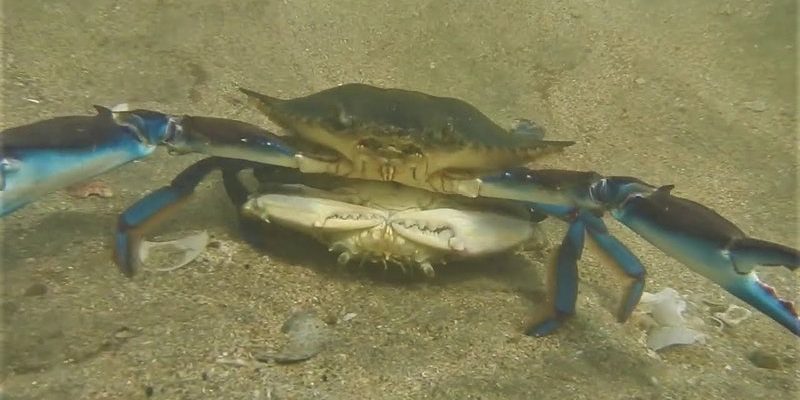
The breeding and reproduction of blue crabs is a story of adventure and survival. Imagine you’re watching a film where the main characters face challenges, grow, and ultimately thrive—this is much like the journey of a blue crab. They navigate through various stages, from mating to hatching, all while contending with the changing tides and the threats of predators. Here’s what you need to know as we explore their life cycle, with all its intricacies and marvels.
Understanding Blue Crab Biology
To truly appreciate the breeding habits of blue crabs, it’s essential to understand their biology first. These creatures are known scientifically as *Callinectes sapidus*, which translates to “savory beautiful swimmer.” Adult blue crabs typically reach around 8-9 inches in width but can grow larger in the right conditions. Their hard, protective exoskeleton hides a soft, delicious body. But what’s more fascinating is their reproductive system.
Blue crabs have a unique trait: they can change their sex. Females can transform from males to females in certain environments, particularly when populations are low. This adaptability is crucial for their survival, especially in changing ecological conditions. Mating usually occurs during the warmer months, when the waters are inviting and the crabs are most active.
The Mating Process
The mating season for blue crabs kicks off typically between May and October, depending on the water temperature. Here’s the thing—male blue crabs are notorious for their romantic pursuits. They can sense when females are ready to mate, especially after the females have molted. This is when she sheds her old shell, becoming soft and vulnerable, which is the perfect time for a male to step in.
During this courtship, males will often display aggressive behaviors to attract females. It might seem a bit rough around the edges, but it’s all part of the dance. Once a female is ready, she can mate with multiple males, which is quite common. This multi-mating provides genetic diversity, which is vital for a healthy population.
Fertilization and Egg Development
After mating, fertilization occurs internally. Females can carry fertilized eggs in a special pouch located under their tails. This process is quite amazing, as a single female blue crab can produce anywhere from 750,000 to 2 million eggs! You might be wondering where all those eggs go. Once ready, she’ll release them into the water to incubate.
The timing of this release is crucial. Females often choose to lay their eggs in brackish waters where both freshwater and saltwater mix. This offers the safest environment for the eggs since they will hatch into larvae that need specific conditions to thrive. If you think about it, it’s like a mother choosing a warm, sheltered spot to lay her babies.
Larval Stages
Once the eggs hatch, they enter the larval stage. The larvae, known as *zoea*, are tiny and almost unrecognizable as crabs. They drift with ocean currents and rely on plankton for food during this early phase. This stage can last several weeks, during which they will molt several times, gradually transforming into more recognizable juvenile crabs.
During these larval stages, survival is tough. Predators are everywhere, and many larvae won’t make it to adulthood. Those that do, however, will eventually settle into estuarine habitats where they can continue to grow. Each stage is a bit like leveling up in a video game, requiring adaptation and strategy to survive.
Juvenile Development
As the blue crabs grow and develop, they transition from larvae to juvenile crabs. This stage is marked by significant changes in size and appearance. Juvenile crabs are often found in shallow waters where they can hide from predators. They continue to molt, growing stronger and larger with each shedding of their exoskeleton.
The juvenile phase can last several months to a year, depending on environmental conditions. They reach maturity around 1 to 1.5 years, when they are finally ready to mate. This long development phase is crucial for their survival, allowing them to build strength, skills, and size before facing the challenges of reproduction.
Factors Affecting Reproduction
Several factors can influence the breeding and reproduction of blue crabs. Water temperature is a significant one; it affects their mating habits, larval development, and overall health. Warmer waters tend to promote more active mating, while cooler temperatures may slow down reproduction rates.
Pollution and habitat destruction also play a role. When their habitats are damaged, it can lead to lower populations and reduced reproductive success. This is why conservation efforts are vital. By protecting their environments, we’re also helping future generations of blue crabs thrive in our waterways.
The breeding and reproduction of blue crabs is a remarkable journey of growth, survival, and adaptability. From courtship to the release of millions of tiny larvae, each step is crucial for the continuation of their species. Understanding this process not only helps us appreciate these fascinating creatures but also highlights the importance of protecting their habitats.
As we move forward, let’s remember that every action counts. By safeguarding the environments where blue crabs thrive, we’re ensuring that future generations can continue to enjoy the unique beauty and ecological importance of these incredible animals. So next time you see a blue crab, take a moment to reflect on the remarkable journey they undertake to sustain their population—and our oceans.

